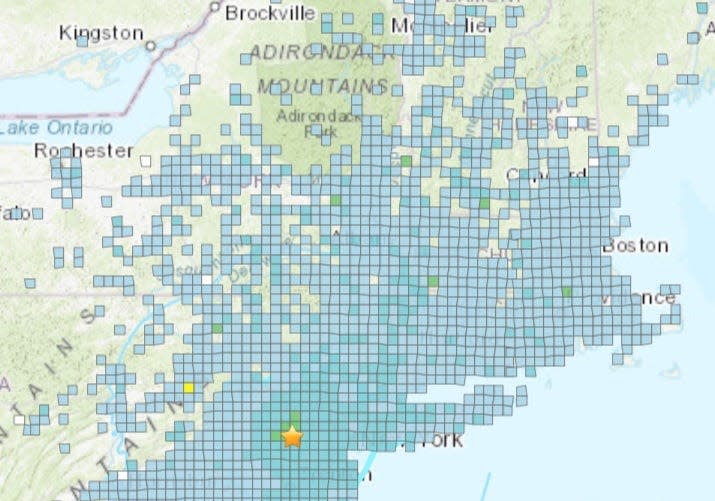Friday's earthquake was the strongest in NJ since 1783. A look back at quake history
The April 5, 2024 earthquake was a once-in-a-lifetime event.
The magnitude 4.8 earthquake near Tewksbury was the most significant to impact North Jersey since 1884, when an Aug. 10 earthquake somewhere near Jamaica Bay toppled chimneys and moved houses off their foundations as far as Rahway.
Other than that quake, there were only three earthquakes in modern history that caused damage in the state: 1737 (New York City), 1783 (west of New York City) and 1927 (New Jersey coast near Asbury Park), according to New Jersey Office of Emergency Management records. However, as with Friday's quake, objects falling from shelves and building damage such as chimney collapse were thought to be the extent of the impact. New Jersey has yet to record a fatality due to an earthquake, according to state records.

The Dec. 19, 1737 earthquake is believed by modern experts to have been a 5.2 magnitude quake. Charted as taking place in the greater New York City area, some accounts say its epicenter was near Weehawken. State records show it threw down chimneys. Chimneys were also hurled down during the Nov. 29, 1783 quake. Estimated at a 5.3 magnitude that originated in modern-day Rockaway Township, according to state records, it was felt from Pennsylvania to New England.
The Aug. 10, 1884 quake, estimated at a 5.2 magnitude was the last the state has seen of its significance and was felt from Virginia to Maine, according to state records. Though, there have been other large quakes felt in the state, including an 1886 quake near Charleston, South Carolina, state records show.
NJ earthquake: Ground shaking in New Jersey sends residents to social media. How communities felt the earthquake
Friday's quake was pinpointed to a spot roughly two miles from Tewksbury, according to the federal government's Earthquake Hazards Program. The location is along the Ramapo Fault System, where most of New Jersey's earthquakes are concentrated. Stretching from Pennsylvania through New Jersey and into New York, this fault system is the longest in the Northeast. It also makes the region the most seismically active area east of the Mississippi River.
The Ramapo Fault makes earthquakes most likely to occur in the northern parts of New Jersey. Still, North Jersey earthquakes, like all inter-plate quakes, are rare. Most earthquakes globally occur where the Earth’s tectonic plates meet. Less than 10% of earthquakes occur within plate interiors, according to records kept by the U.S. Geological Survey's Earthquakes Hazard Program.
Most of the quakes in New Jersey are also small in magnitude. The largest this century before Friday was a 3.5 magnitude quake north of Milford, while most fall under a 2.0, state records show.
Those with a magnitude of 2.5 or less are usually not felt, according to an assessment from Michigan Tech University. Those from 2.5 to 5.4 are often felt but only cause minor damage. From 5.5 to 6.0, slight damage to buildings and other structures could be expected, according to the assessment.
Since the end of 2020, New Jersey has had few earthquakes epicentered within state borders. They include a 2.4 magnitude quake near Tuckerton in June 2021, a 2.3 near Morris Plains on Aug. 30, 2022, a 1.7 near Lake Telemark the same day and a 2.3 near Harvey Cedars on Sept. 9, 2022.
This article originally appeared on NorthJersey.com: Friday's earthquake made NJ earthquake history. Here's why
